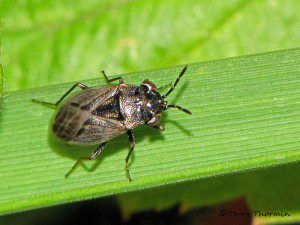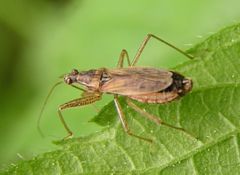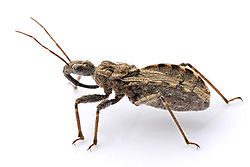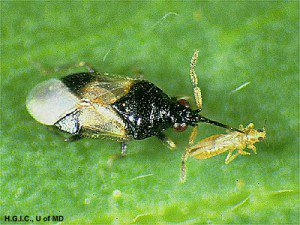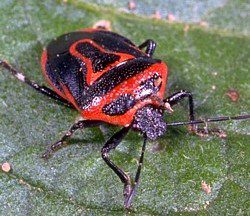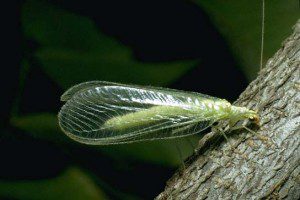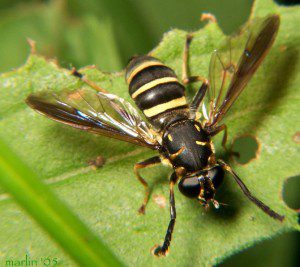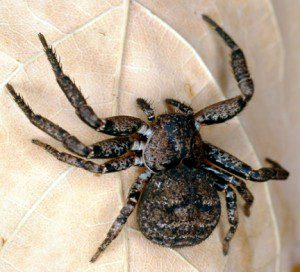 Its Gardening Season!
Its Gardening Season!
Spring time isn’t just for the flower lovers of the world, its also a leap pad for insects and other pests that you might find in your home landscape. Without any warning, swarms and swarms of beetles, bees or other fellas with little legs might invite themselves to your garden sanctuary!
Although many of us enjoyed the warmer than usual winter by having more time for hiking, biking and other outdoor activities, so did the bugs! Without a really good solid cold snap toward the end of the season, many bugs, like Mosquitos, populations are probably going to be higher than they were before. Ticks are also more active earlier in the season as well, with appetites more ravenous than ever before.
But Wait!
Before you go out with a hazmat suit and a gas mask, there are actually some good little buggers out there! Believe it or not, beneficial insects are a crucial part of a successful garden. We all know about Earthworms doing their…well…duty…to help keep soils rich and alive, but there a few lesser known insects that you might want to save.
 By practicing Integrated Pest Management in your yard, you help the environment in many ways, primarily by keeping a whole slue of chemicals out of the soils and waterways. Although its not as fast acting as spraying, luring good bugs to your yards will work for years to come, as your new friends colonize and call your yards home.
By practicing Integrated Pest Management in your yard, you help the environment in many ways, primarily by keeping a whole slue of chemicals out of the soils and waterways. Although its not as fast acting as spraying, luring good bugs to your yards will work for years to come, as your new friends colonize and call your yards home.
A garden without natural predators means a world of insects gone wild. There’s nothing left to keep pest levels in check. In fact, chemicals can mean double trouble because although you wipe out the first wave of pests, the second wave (not the usual pest, but another insect moving into the area) can cause even greater losses than the insects you were trying to get rid of in the first place
Here are some good bugs to say “Hello, welcome to my yard”
Preying mantis
Preying mantis are general predators that catch and feed on moving insects. They are very interesting creatures to watch but probably play a minor role in controlling pest insects.
(He says, “All the better to see you with my dear”) They feed with sucking mouthparts and consume the internal body organs of a variety of insect species. They get their name from large, kidney shaped, reddish brown eyes on the transverse head.
(Very Different Than A Damsel In Distress) These general predators are slender greyish or tan insects about 3/8″ long. They have sucking mouthparts and feed on many different hosts. The head is elongated. Young damsel bugs look like the adults. Wing pads develop and get larger as the immature approaches the adult stage.
(Who Wouldn’t Want This Guy On Their Team?) They are general feeders with sucking mouthparts. The head is very narrow and long and the beak is usually fairly pronounced and easy to see. The abdomen extends laterally beyond the wings. They will also readily bite people.
(No, He Doesn’t Wear A Patch Over His Eye) These general predators have a distinct black color with a white triangle on each side of the wings. The immature stage of the minute pirate bug is orange to amber and dark body contents can be seen through the skin.
Several stink bugs are predatory and feed on insects with their sucking mouthparts. A common one in the Pacific Northwest, the two spotted stink bug feeds on larvae of the Colorado potato beetle. Nymphs are colored like adult stink bugs but are shaped like ladybeetle adults without wings.
These adults are around 1/2 to 3/4″ long with golden eyes. They are attracted to lights at night. Some green lacewing adults feed on aphid honeydew and plant liquids and others are predacious.
Ladybeetles In All Forms!
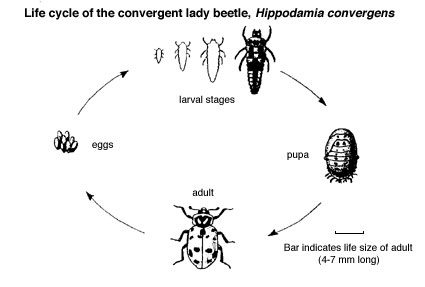
Most ladybeetle eggs are in small clusters and can be found on the undersides of leaves. They are usually orange and stand upright from the leaf surface. Larvae of many lady beetles are alligator shaped, black and orange, and have chewing mouthparts. Aphids are the preferred food but they will consume other insects. Once the ladybeetle larvae mature they pupate like all beetles. Ladybeetle pupae generally attach to plant stems, posts, or other suitable place. They are commonly found in crops where large aphid populations once existed.
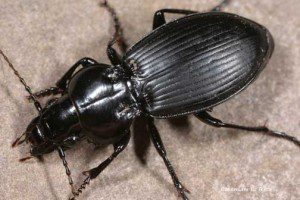 Predacious ground beetle adult and larva
Predacious ground beetle adult and larva
There are many species of these fast moving ground beetles that prey on other insects. They are general predators and vary in size and color. Most are black and the head is narrower than the thorax which is narrower than the wings.
These common flies that hover over flowers are beneficial for pollination and the larvae feed on aphids. Many of these flies mimic wasps or bees.
Crab spider
Crab spiders are but one of several kinds of spiders found in fields and homes. Wolf and jumping spiders are also very common. They are general feeders and consume many harmful insects as well as good ones. See the spider section of these Insect I.D. guides for more spider pictures.


